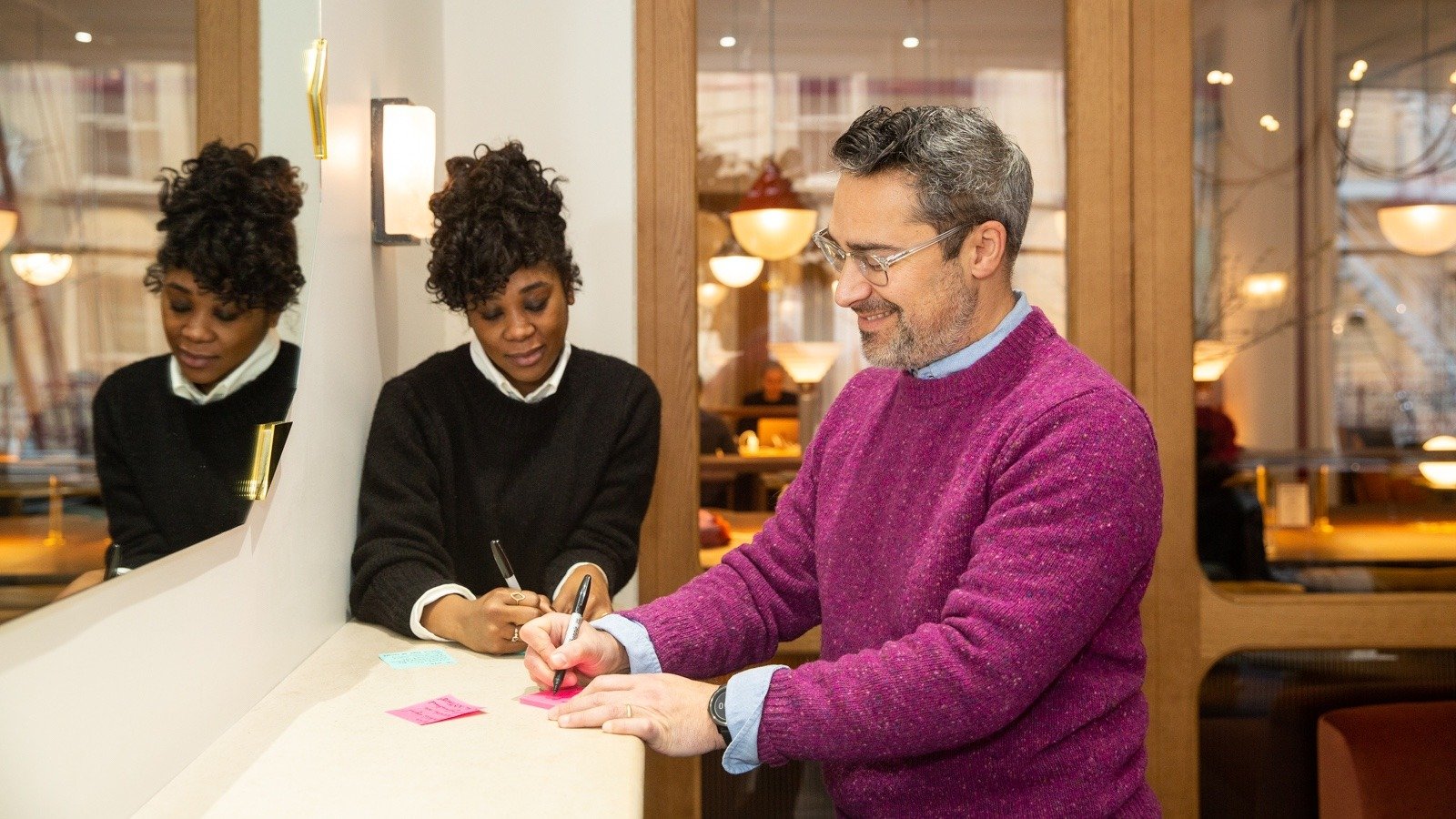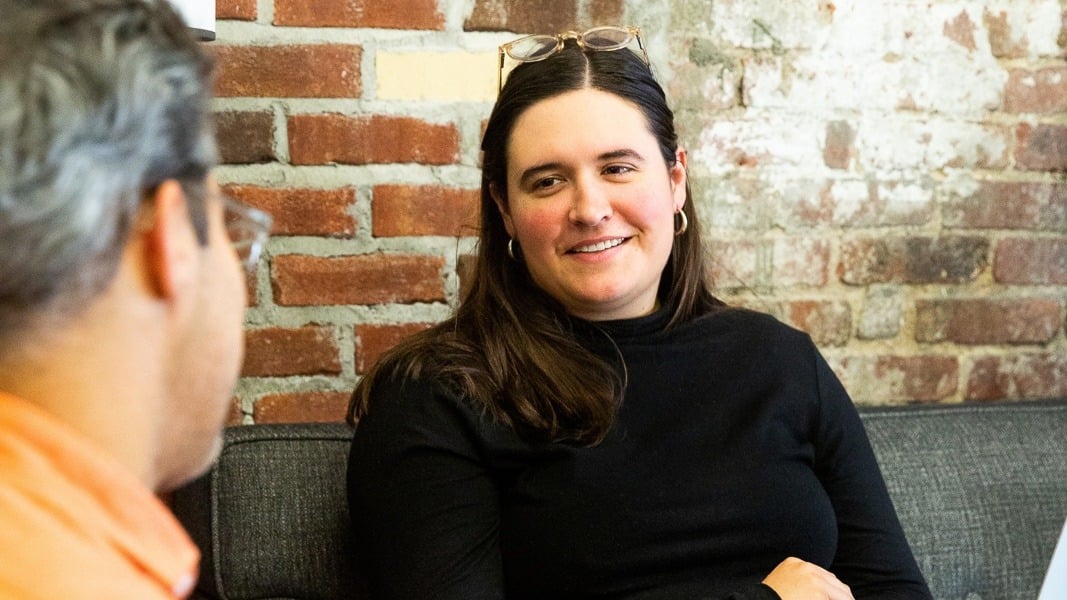Published April 8, 2016 | Updated February 4, 2019 | 25 minute read
To:
August team members, our clients and partners, future team members, and our extended network of supporters who share our commitment to building capable teams for the world’s most meaningful missions
The First 200 Days
Our lawyers told us that that we couldn’t have asked for a more optimal scenario to start a business like ours. The business and our self-organizing operating model was proven — our former employer Undercurrent had been on track to do approximately $10mm in annual revenue at approximately 30% profitability with a highly engaged and talented team. We had found product-market fit — several Fortune 100 companies were seeking our help in fundamentally transforming how their companies work. We had a network of clients and professional contacts who knew us and our work, and wanted to hire us or help us. And — particularly with Undercurrent going out of business along with its new parent company Quirky — the supply of these services lagged behind the demand.
As much as we love our wonderful lawyers (sincerely — they’re great), the reality of getting our business off the ground wasn’t nearly as ‘optimal’ as they made it out to be.
Less like…

More like…

The world of business is really good at reminding you that your future is anything but certain.
Starting on day zero, we braced for this constant turbulence by adopting a strategy of putting the strength of our team above all else. The typical path for starting a small consulting business is well-established. You can form an LLC nearly overnight, and quickly launch a consulting business as a single owner. And nearly every entrepreneur you’ll ever talk to can rattle off a zillion reasons why you should start your business preferably by yourself, if possible, with one partner if necessary, and with maybe two partners…if you want to make things difficult for yourself and give away a ton of future value. August launched with five founding partners. And, in fact, we even initially set out to start with six, but lost one potential founder during the incorporation phase.
“Five founding partners?! That’s CRAZY!!!” That’s true…and it’s awesome. Try this thought experiment: Imagine the most ambitious, world-changing work you’d like to do. Imagine four of your favorite colleagues. Four people that you love working with. People that inspire you to be your absolute best self every day. People that challenge you and improve every idea you have. Four teammates who help you to hone your craft in every collaboration. Four people that you trust absolutely. Four people who all share a deep passion for the same big dent in the world that you yourself are most passionate about. If you could, wouldn’t you rather chase that big audacious goal with them than attempt to do it on your own? Of course you would. And you’d probably feel crazy for passing it up, if it was an option.
And yet, most entrepreneurs don’t take this path. At least not on day one. One of the biggest reasons for this is because when people talk about ownership, things get difficult. Who deserves what? How much? Why? How do we decide? Answering these questions in a way that makes everyone feel heard, respected, and more committed to the company is complex. The easiest ways to avoid this complexity is to put off the conversation and to limit the number of voices.
But for us, the benefits of having more voices — and thus more diversity of perspectives, experience, genders, talents — and more collective capacity outweighed the added challenges of launching with five founders. Once we committed to this, though, we still had to deal with the complexity it created.
While generally we are diligent about putting off big decisions until we’ve already tried something and have data on what worked or didn’t, we believe that ownership is special. Ownership is fundamental to how an organization operates and putting off big decisions about ownership only increases the challenges and complexity of those decisions later on. In launching, it was important to us to build a business whose ownership structure gets stronger over time.
At August we believe that clarity of and commitment to purpose — a reason for being above and beyond the bottom line — is at the heart of what makes an organization responsive, able to adapt and thrive in the face of uncertainty and exponential change. And if you really want to put purpose above profit, and you want to empower the members of the organization to hold the organization accountable to that commitment, then every employee has to share ownership of — both figuratively and literally — the tension between purpose and profit.
For approximately the first eight weeks of our existence our time and attention was split between pursuing new client engagements (and much needed revenue) and building the ownership foundation of our corporation. We took zero external investment. Each of the five founders put $5,000 into the August bank account to cover initial legal expenses and other operating costs. We specifically chose to put in the same amount, and as little as possible so that our relative personal finances would not factor into our relative ownership.
Dividing our focus between pursuing growth and designing our ownership and compensation model had its costs. During our first two months, September and October, we only sold a total of $30,000 of services. Considering that the cost of our collective salaries is $74,102 per month, an average of $15,000 per month in sales was below our target… by a lot. The founders delayed taking any salary for the first three months, and took a fraction of our full salary through February while we saved up cash to extend our runway.
Once we finished building the v1 of our equity and compensation model, agreed on each founder’s stake, and the amount of ownership we would reserve for future team members (50% of the company) we refocused on the basics of our business with renewed commitment and trust and began to see quick results.
Once we got our first multi-cycle contracts closed (and generous payment terms — thank you, you know who you are), we were able to start putting our energy into projects and tasks that would make our business sustainable in the year ahead.
Overall, our business started like nearly every other small business. Lots of ups and downs. Lots of surprises. And enough successes along the way to make us feel even more engaged, more committed, and more of a team on day 200 that we did on day one.
What follows below is a comprehensive summary of our business today. Why we exist. What we do and how we operate. And, most importantly, what we have learned so far.
– Mike Arauz, Acting President through December 2016
Our Purpose: A capable team for every meaningful mission
Our progress toward our purpose
Six months in, it’s fair to say that the gap between what we’ve accomplished so far and what we aspire to accomplish in the decades ahead is vast. As it should be. That said, how are we doing so far?
We’ve done nine projects with eight different client organizations.
Four of the eight organizations have been nonprofits, and one is a major subsidiary of a privately held global corporation.
Three of the eight are publicly traded Fortune 1000 corporations (or divisions within Fortune 1000 corporations).
Of our nine engagements:
- One ongoing advisement (one August team member, ~20hrs per four-week cycle)
- Three leadership workshops (two August team members per engagement, each allocated at 100%, ~two weeks each)
- Four strategic engagements focused on improving a specific aspect of an organization, i.e. team/org design, product development process, performance management (two August team members per engagement, each allocated at 100%, ~four-twelve weeks each)
- One ongoing organization development and transformation engagement (three August team members, each allocated at 100%, for 48 weeks)
Our working hypotheses about how to pursue this purpose, to be continuously tested and validated:
- A team’s ability to achieve their mission in today’s world depends on their responsiveness, which we define as their ability to quickly sense and adapt to opportunities, challenges, and changes around them
- A team’s responsive capability depends on the collective responsive capability of the organization of which they are a part
- An organization’s collective responsive capability can be dramatically enhanced by becoming an Open Learning Network
- To become an Open Learning Network an organization should learn and adopt a collection of specific behaviors, habits, and tools focused on increasing access to and the flow of useful information (Open), increasing experimentation and continuous iterative improvement (Learning), and making it easier for people to contribute to the organization’s mission regardless of who they are or where they sit in relation to the organization, across functional silos, regions, and hierarchies (Network)
- Each team and organization is unique, and needs to develop its own version of an Open Learning Network with its own bespoke kit of behaviors, habits, and tools
- Large, established organizations have a critical role to play in distributing new technologies and ways of working that are invented in smaller organizations
- If we can figure out how to help large, established organizations change then we can impact the lives of many millions of workers around the world, and accelerate our impact
- Large, established organizations desire a solution that can substantially enhance their entire organization at an enterprise scale (we think of this solution as ‘Responsive Enterprise Transformation’ or RET)
Cap Table, as of March 2016
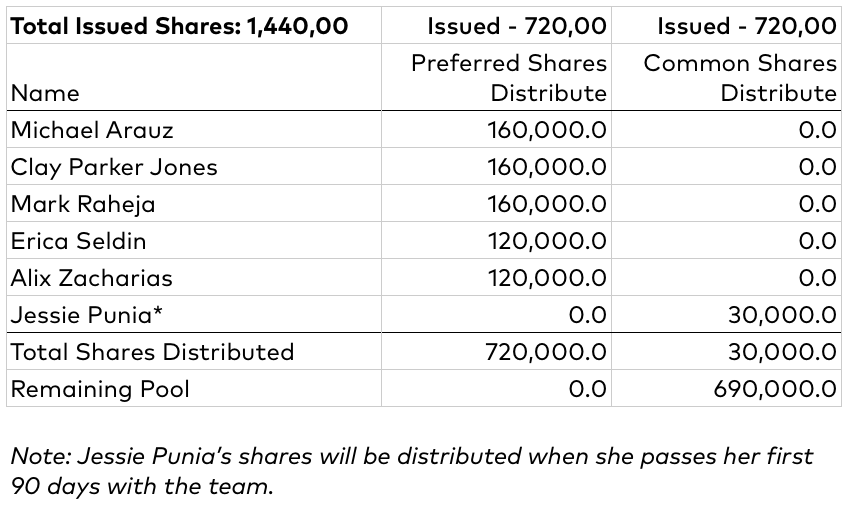
Cash on Hand and Revenue Per Month
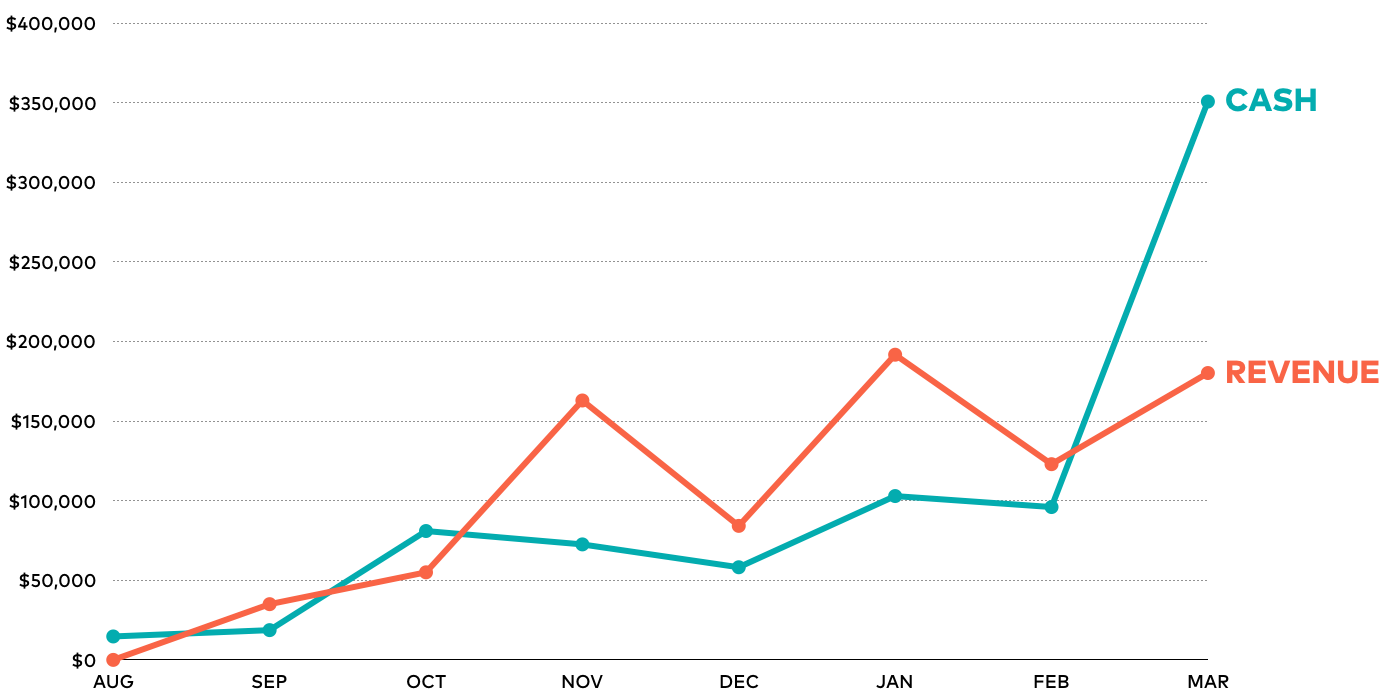

Salaries Paid and Operating Expenses Per Month
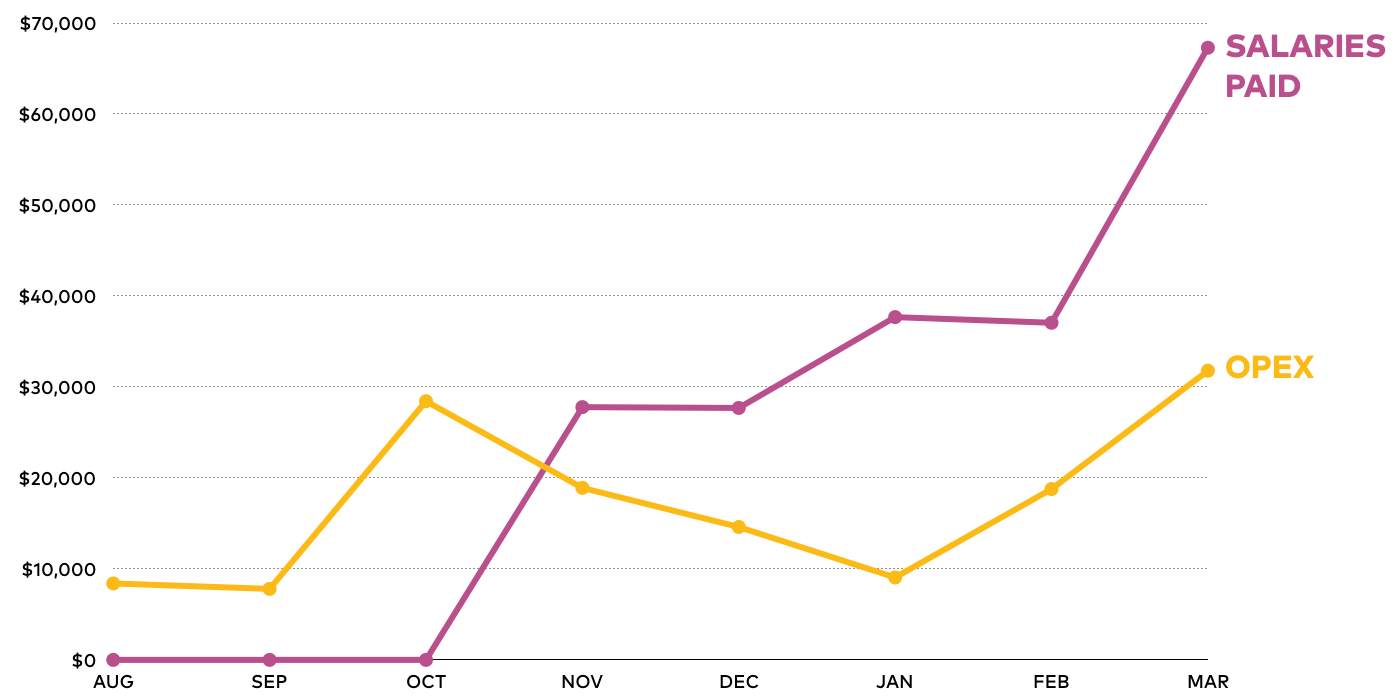

Sales

Our Core Values:
If our Purpose tells us why we exist, and our operating principles tell us how we work, our values tell us who we are. They are at the heart of everything we do.
TEAM
We believe that the world’s most valuable work depends on teams of people working together to achieve a common goal. Figuring out how to create teams who are capable of accomplishing great things — inside and outside our company — is at the heart of everything we do.
Team even at the expense of flexibility and individual recognition.
EQUITY
We are fiercely committed to creating equal opportunity in the workplace for people regardless of gender, race, ethnicity, sexuality, and economic background. When it comes to related policies, actions, and politics, we are inclined toward activism.
Equity even at the expense of fast growth and ease of cultural affinity.
LEARNING
We design our culture and ways of working to maximize the quantity and quality of learning. We measure achievement by the value of the lessons learned.
Learning even at the expense of efficiency or comfort.
PUBLIC BENEFIT
In today’s networked world our own achievement is directly linked to the achievement of others with a shared worldview. To whatever extent possible, we will seek to share what we do and invite others to benefit from it.
Public Benefit even at the expense of profit or competitive advantage.
JOY
We believe that people do their best when their work brings them joy. We love what we do, and want to help others discover the joy in their work.
Joy even at the expense of being taken seriously.
Operating Principles & Our Theory of Change
Most companies today are still using an obsolete operating model that was designed over 100 years ago for a world that no longer exists.
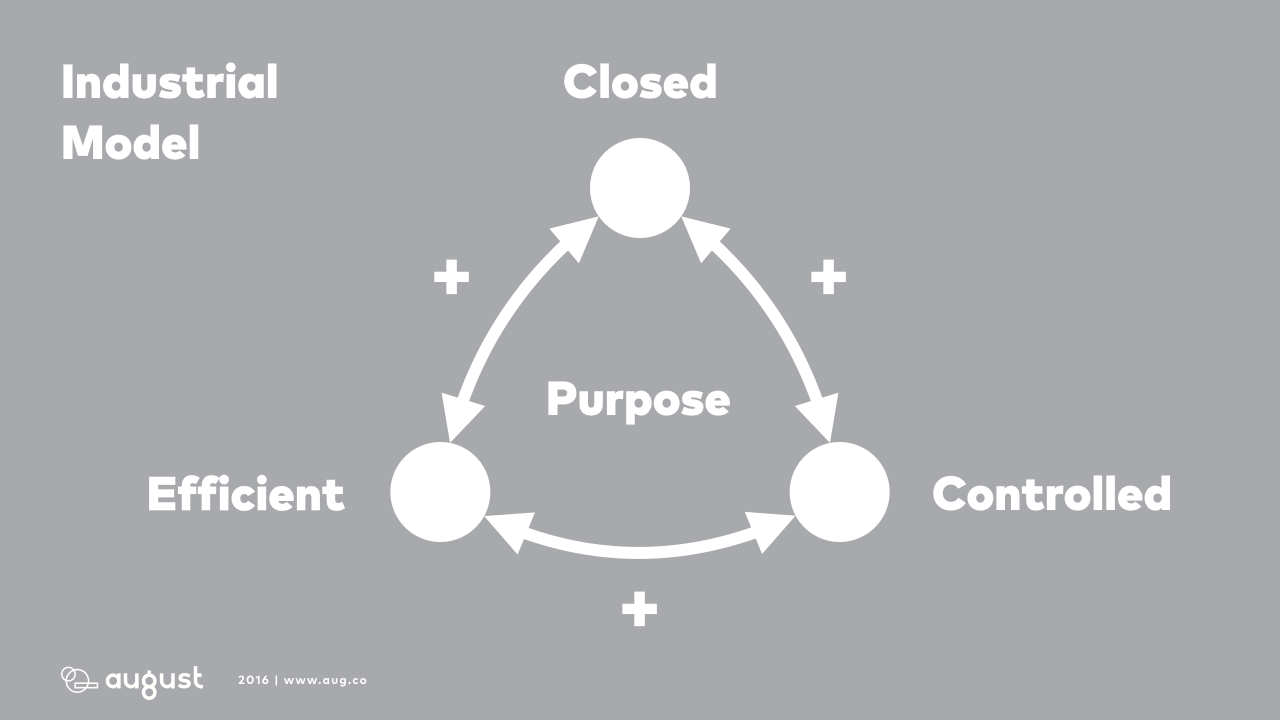
This industrial-era model worked really well for a long time. From the early 1900s all the way through the 1990s you could get a huge amount of value out of doing this better than your competitors.
Working toward a clear and specific — and usually profit-driven — collective purpose, you could succeed by being:
- Closed: developing proprietary methods and carefully protecting your IP.
- Efficient: scientifically breaking down work into small, repeatable tasks, and executing with reliability and efficiency at massive scale.
- Controlled: coordinating the work of thousands of employees across regions and functions through strict hierarchies and clear chains of command.
100 years ago, this model worked well when it was possible and advantageous to try to predict the future; when it was possible and useful to try to be certain about what was going to happen next.
Today, the world we live and work in is changing so fast that it has become impossible to predict, or even to effectively plan for. Yet, most companies that are shaping our future — for better or worse — are using an outdated way of working that revolves around planning and predictability.
This hierarchical, command-and-control model that enabled your company to thrive in the 20th century now inhibits your company’s ability to succeed in the 21st century.
This is why:
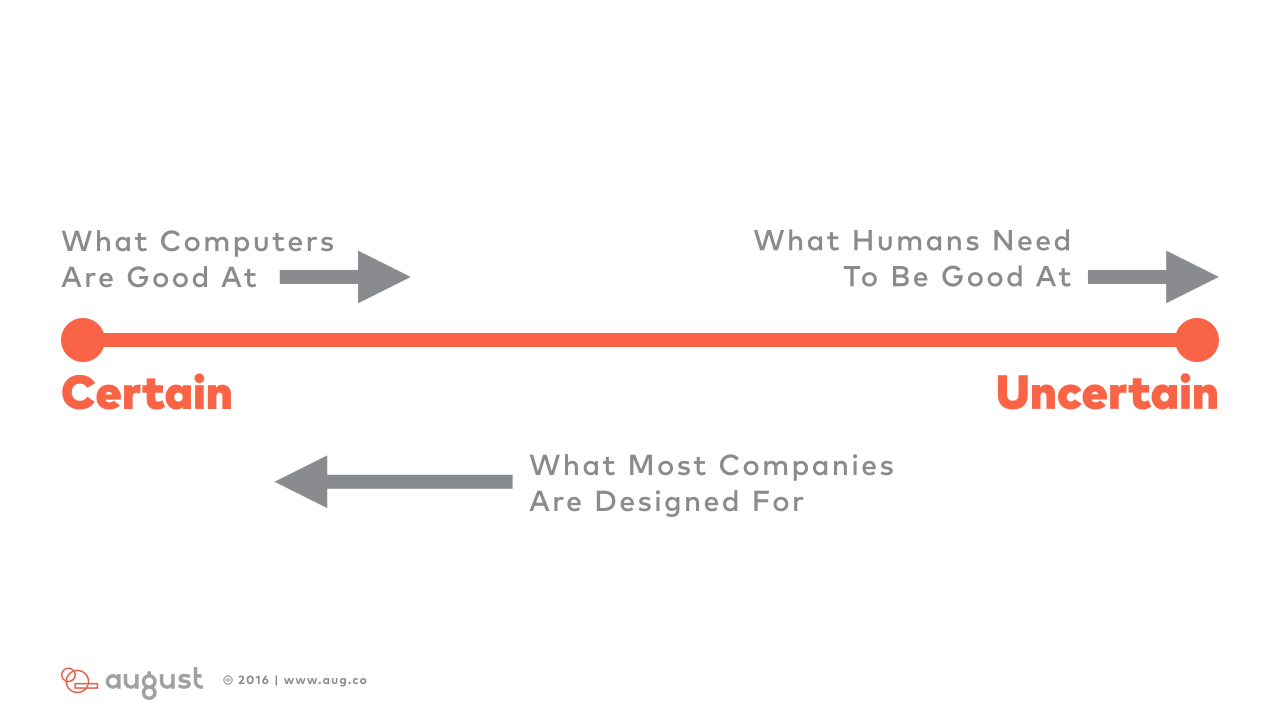
Today, this difference — between optimizing for certainty vs. optimizing for uncertainty — is at the core of what separates successful organizations from everyone else.
Optimizing for uncertainty looks different, and it’s what allows organizations to thrive in the face of constant change.
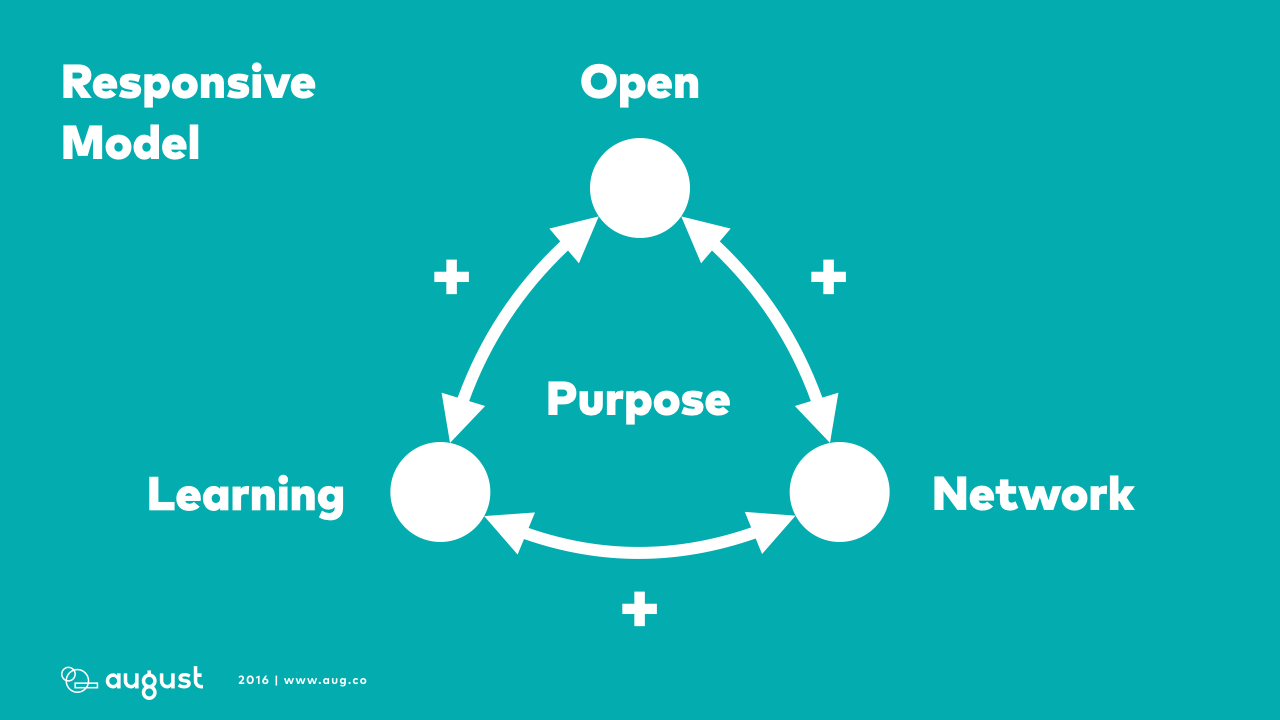
If you want to optimize for uncertainty, you begin by defining a clear and specific collective purpose. The digital era enables a new way of thinking about purpose; it now serves as an invitation to people inside and outside the organization to be part of a meaningful mission beyond the bottom line.
And your success in pursuing that mission will depend on your ability to become an:
- Open: sharing and processing useful information
- Learning: turning the knowledge you gather into learning and continuous improvement
- Network: empowering people to contribute no matter who they are or where they are, and to break the limits hierarchy, functional silos, cultural norms, and even the organization itself
We call organizations who embrace this way of working “responsive organizations” because they are better able to sense and respond quickly to new opportunities, challenges, and changes in their environment.
How We’re Working:
We currently have our work broken down into the following areas of focus, which we think of as Epics, or large missions that can be broken down into smaller incremental projects and tasks.
- Convert one new enterprise-size client from initial engagement to large-scale organization development and transformation engagement (#bizdev — i.e. sales, business development, and new client engagements)
- Make measurable, documented change at a large-scale global Fortune 500 corporation (#client — i.e. client delivery for our ongoing organization development and transformation engagement)
- Establish a sustainable pattern for spending (#ops — i.e. finance and operations)
- A v1 theory of change for scaled organizations (#offering — i.e. theory and product development)
- Create 10 large-size net new client leads and 10 net new high-potential team member candidates (#marketing — i.e. content marketing, newsletter, advertising, and PR)
- Add 2 new employee-owners (#talent — i.e. recruiting and hiring)
What’s working?
- Our customers are happy
- We’ve identified an important and recognized problem: Nearly everyone we talk to who works inside of any organization of nearly any scale — from 30 people to 300,000 people recognizes the challenges and the need for change #purpose
- Staffing every project with fully-dedicated teams who are solely focused on only one single client engagement at a time. #client #bizdev
- Spending as much time as possible on site with our clients (2–3 days/week) is necessary and effective to help us understand the complexity and challenges of implementing such fundamental changes in how they work. #client
- We’ve met so many amazing people around the world who share our passion for this work. We feel like we’ve tapped into an incredible and growing global community. #purpose #talent
- Our approach to “Responsive Enterprise Transformation” that combines accelerating organizational priorities, mobilizing grass-roots change, and piloting shifts in core systems and processes, has been received well by senior leaders at enterprise-size organizations. #bizdev #client
- Our business model works, even with higher labor costs due to full allocation. Our operating expenses are dramatically lower than they were at Undercurrent — consider that we were spending $210 per employee per month on Uber — and by running a leaner business we can deliver better margins and better quality output. #ops
- Our software stack is both effective and inexpensive. For less than $2,000 per month, we have: instant access to video- and audio-conferencing (Google Hangouts and Uberconference); multiplayer document collaboration and project management capability (Google Docs and Trello); a permanent open record of all conversations and output (Google Groups and Slack); marketing automation, CRM, calendar management (Google Docs, Squarespace, MixMax and Mailchimp); point-and-click accounting (InDinero), HR, compensation, and benefits (Justworks); comprehensive employee equity management (Eshares). When we say it’s easier than ever to start a business and scale it up, this is why. #ops
- Since September, we’ve been working out of a coworking space in Brooklyn called Coworkrs. It’s within walking (or biking) distance of everyone on our team and has been an awesome home base for us. It’s been incredibly useful to have flexibility in expanding our workspace as we grow, and the operational support to help host events and provide general office amenities. #ops
- Colleagues in our industry and people who are thinking about joining our team have responded extremely well to our Public Google Drive. We did receive a few humorous responses when we launched — to the effect of “OMG!?! You accidentally made your compensation accessible to anyone!!”. But the vast majority of responses have been overwhelmingly positive. We have heard on multiple occasions that it is appreciated as a resource for other like-minded business owners and operators and that it provides credibility to our commitment to transparency. It has also provided us with signal about where to focus and how we can sharpen our ideas and efforts. #principles #values
- Leveling up our collective marketing capability — which means spending more on ads, PR teams, swag, and events than we’d been used to — is leading to a rapidly growing reputation and more paid speaking gigs. By the end of May, all of our founding members will have spoken in public about August and/or some permutation of The Future of Work, which is super exciting! #marketing
- Our fantastic list of women leaders and speakers has grown to over 100!! The response to this has been wonderful. Most of the list has grown organically through contributors outside August, mostly people we didn’t know directly (before they contributed :-). There’s clearly a need for more resources like this, and we have hopes of working with others to turn it into something that can grow further, faster. (If you’re interested in helping, please drop us a note — team@aug.co) #values #marketing
- It’s still early, but our recent sponsorship of the Another Round podcast has already exceeded our expectations, and generated some awesome new candidates for our team and expanded our network. We’re looking forward to sharing more about this after the sponsorship is complete. #talent #marketing #values
Where are we getting stuck?
- Teams vs. Organizations #purpose #offering
- Finding the right partners (appreciates the need for change + is responsible for solving it + has the budget and support to hire us to help) #purpose #sales
- Building a foundation for a radically self-managing organization takes time and trust. #ops
- Joining a business as an employee is easy; joining a business where you’re signing up for ownership is harder; joining a business where you’re signing up for ownership and you’re signing up to be part of a self-organizing system is unprecedented. Our ability to attract people into our business may be hampered because people don’t know what they’re getting into. #talent
Where are we trying to improve?
- Increase the diversity of perspectives at the board level
- Increase the diversity of the people in our talent pipeline
- Make it easy for great candidates to say ‘yes’ to joining our team
- Build relationships with HR executives and business leaders at Fortune 1000 organizations
- Figure out how to make the initial introduction to responsive ways of working the BEST WORK EXPERIENCE EVER!
- Make it easy for people within a client organization to discover, learn, and adopt responsive ways of working without our assistance
- Improve our ability to work behind the corporate firewall, making the most of corporate IT-approved tools and software
- Develop relationships with established responsive software providers (Microsoft, Google Docs, Box, Atlassian, Trello, Asana, Slack, etc.)
- Turn what we’ve applied and learned into tools for others
- Make it easier for clients who have never worked with us before to get started
- Manage our cashflow so that we can increase our risk tolerance for adding new team members, making strategic investments, and spending on growth
If you care about making the future of work more human and changing the way organizations operate, subscribe to our weekly newsletter and get in touch.

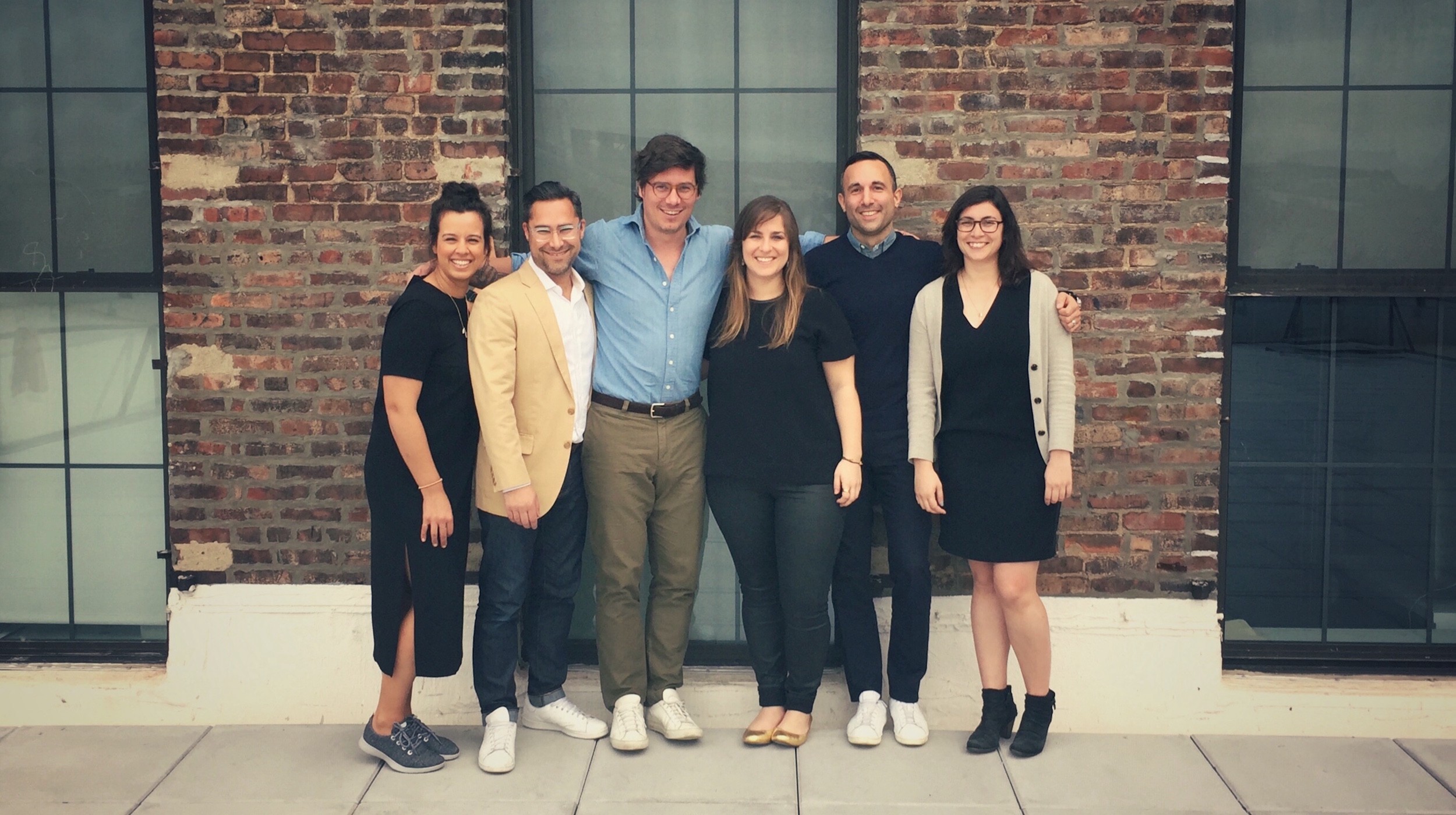
.jpg)




